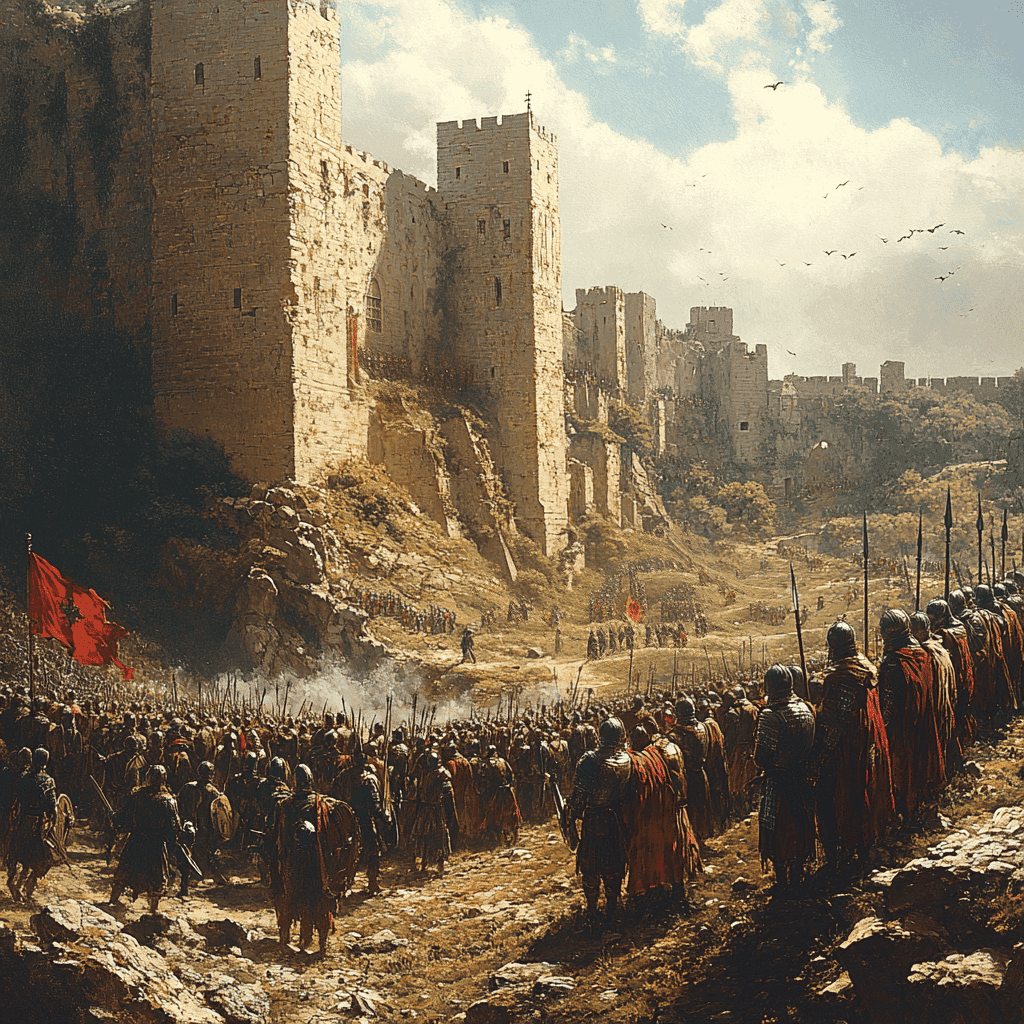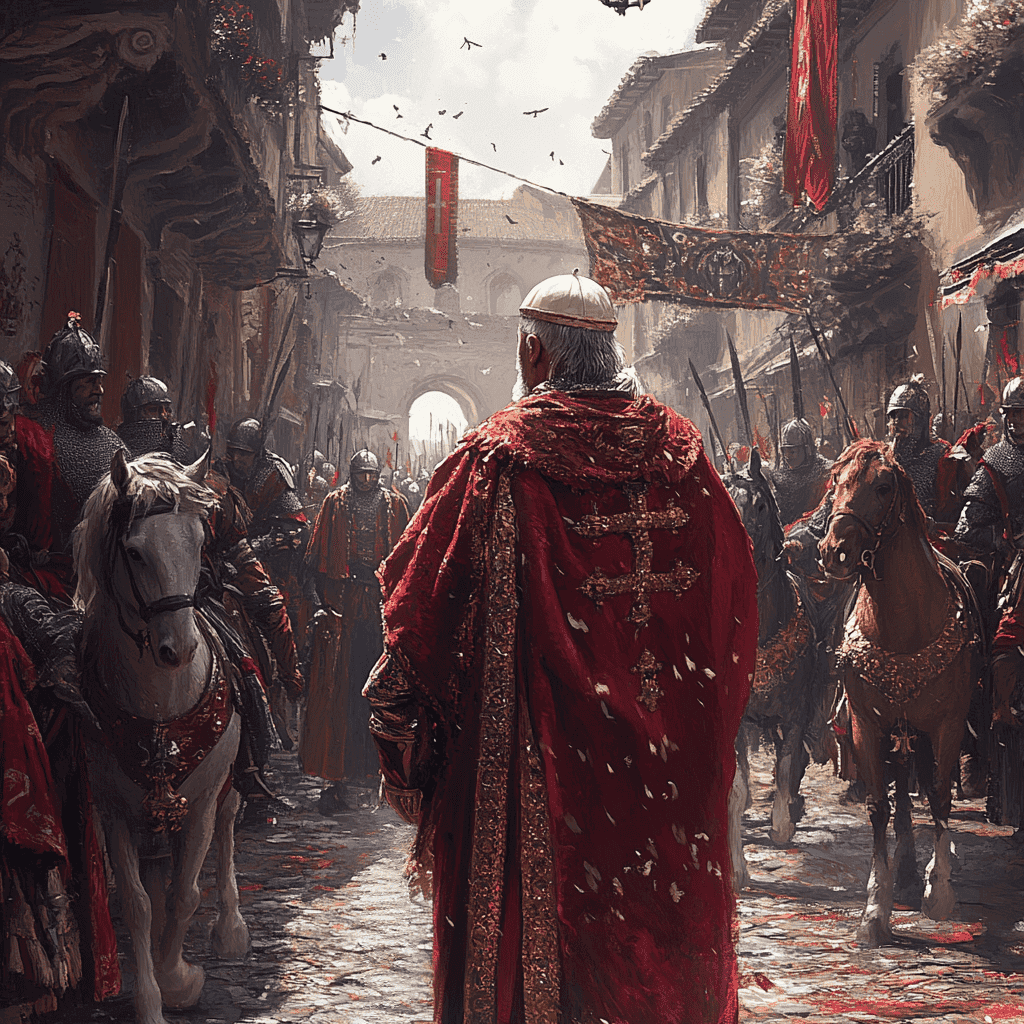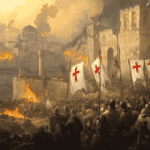
The papal schism between Antipope Anacletus II and Pope Innocent II, lasting from 1130 to 1138, was one of the most dramatic and consequential conflicts in the history of the Catholic Church. It was marked by political intrigue, theological debates, military campaigns, and the involvement of powerful secular rulers.
Background: The Death of Pope Honorius II
The schism began with the death of Pope Honorius II in February 1130. His passing left the College of Cardinals deeply divided over his successor. Two factions emerged: one supporting Cardinal Gregorio Papareschi, who took the name Innocent II, and the other favoring Pietro Pierleoni, who became Anacletus II. Both claimants were consecrated on February 23, 1130, leading to a dual papal election and a major crisis in the Church.
The division was rooted in broader tensions within the Church. Historians have interpreted this schism as a clash between “old” Gregorian reformists (aligned with Innocent) and “new” Gregorian reformists (aligned with Anacletus), reflecting differing visions of Church governance and relations with secular powers.
Anacletus II: The Antipope
Pietro Pierleoni, born into a wealthy Roman family with Jewish ancestry, was a controversial figure. Despite being well-respected for his theological knowledge and administrative skills, his background became a target for opponents like Bernard of Clairvaux, who used anti-Semitic rhetoric to discredit him. Anacletus gained significant support within Rome, including from the influential Frangipani family and Duke William X of Aquitaine. Crucially, he allied himself with Roger II of Sicily, granting him the title “King of Sicily” in exchange for military backing.
Anacletus quickly consolidated power in Rome. His supporters took control of key sites such as St. Peter’s Basilica and enthroned him with all the pomp befitting a pope. However, his influence largely remained confined to Italy; outside Rome, his position was weak due to limited support from major religious orders and European rulers.
Innocent II: The Exiled Pope

Innocent II’s election had less initial support among cardinals but gained legitimacy through alliances with powerful figures north of the Alps. Forced to flee Rome due to Anacletus’ dominance, Innocent embarked on a diplomatic mission across Europe. He secured recognition from King Louis VI of France at the Council of Étampes (1130) and King Henry I of England during a meeting at Chartres in 1131.
Innocent’s greatest ally was Bernard of Clairvaux, a prominent Cistercian abbot who rallied monastic orders and European rulers to his cause. Bernard’s theological influence and political acumen proved decisive in shaping public opinion against Anacletus.
In March 1131, the German emperor Lothar met with Innocent at Liège, where he demonstrated subservience to the pope by performing the strator service (holding the pope’s stirrup). Although his request to be crowned Holy Roman Emperor was denied until Innocent was back in Rome. So, Lothar promised to escort Innocent back to Rome and assist him against King Roger II of Sicily.
Military Struggles: The Role of Secular Powers
The schism escalated into armed conflict as both popes sought support from secular rulers. Lothar set out for Italy in August 1132 with a modest army. Many troops were left behind in Germany to guard against uprisings as his rule was not secure. His forces carefully avoided hostile cities but failed in an attempt to besiege Milan due to their limited size. By early 1133, Lothar reached Rome, which was largely under Anacletus’s control. As St. Peter’s Basilica was inaccessible, Innocent crowned Lothar Holy Roman Emperor in the Lateran Basilica on June 4, 1133.

Lothar’s expedition marked a symbolic victory for Innocent II but did not decisively resolve the schism or secure imperial dominance in Italy. Anacletus remained entrenched in Rome, supported by Roger II of Sicily. Lothar’s limited military resources prevented him from fully asserting control over central Italy or defeating Anacletus outright.
Roger II of Sicily emerged as Anacletus’ most formidable ally. His military strength allowed Anacletus to maintain control over Rome despite repeated attempts by Innocent’s forces to dislodge him. However, Roger’s ambitions extended beyond supporting Anacletus; he sought recognition for his kingdom and territorial expansion in southern Italy.
Turning Point: Decline of Anacletus’ Position
By 1135, Anacletus’ position began to weaken significantly. Innocent convened councils in Pisa (1135) and Würzburg (1136), where Anacletus and his supporters were excommunicated. In 1136, Lothar launched another Italian campaign at Innocent’s urging but faced logistical difficulties and troop revolts during the summer heat. Although he managed to capture Capua and Apulia from Roger’s kingdom, these territories were ultimately granted to Rainulf of Alife under joint imperial-papal authority. Lothar returned to Germany after these campaigns but died while crossing the Alps on December 4, 1137.
Despite this setback for Innocent, Anacletus faced growing isolation outside Rome. His reliance on Roger limited his ability to gain broader support among European rulers or religious communities. Bernard of Clairvaux intensified his efforts against Anacletus through sermons and letters that swayed public opinion further toward Innocent.
Resolution: Death of Anacletus II
The schism ended abruptly with the death of Anacletus II on January 25, 1138. His supporters attempted to continue resistance by electing Antipope Victor IV as his successor. However, Bernard persuaded Victor to resign within months. This effectively left Innocent as the uncontested pope.
Innocent convened the Second Lateran Council in April 1139 to formally end the schism and address its consequences. The Council nullified all acts performed by Anacletus and deposed clergy ordained by him. It also issued canons against simony, clerical marriage, extravagance among clergy, and other perceived abuses.
Innocent used the Council to formally excommunicate Roger II of Sicily , effectively casting him out of the Catholic Church. This act was a severe blow to Roger’s legitimacy and authority, as excommunication carried significant spiritual and political consequences in medieval Europe.
However, Roger II was not one to accept defeat easily. In a bold and strategic move, he prepared to confront the papal forces directly. On July 22, 1139, the conflict took a dramatic turn at Galluccio. Roger’s son, Roger III of Apulia, led a daring ambush against the papal troops. With a force of just one thousand knights, he managed to capture Pope Innocent II and his entourage.
This unexpected victory placed Roger II in a position of unprecedented power over the papacy. Just three days later, on July 25, 1139, the captured pope was forced to negotiate with his captor. The result of these negotiations was the Treaty of Mignano, an agreement that compelled Innocent to acknowledge Roger II’s royal status and possessions in Southern Italy.

Legacy
The schism weakened papal authority, but its resolution at the Second Lateran Council in 1139 led to important reforms, including the condemnation of simony and clerical misconduct. The schism also influenced future papal politics, emphasizing the importance of broader support beyond Rome for papal legitimacy. Ultimately, this period of division prompted efforts to strengthen and centralize papal power in subsequent years.




